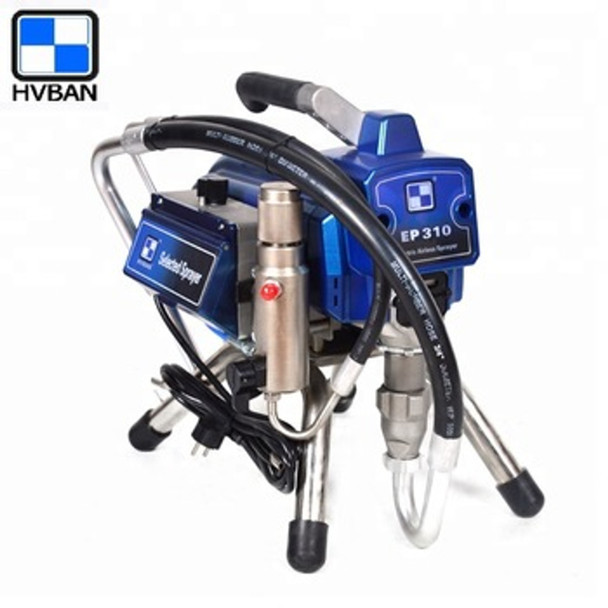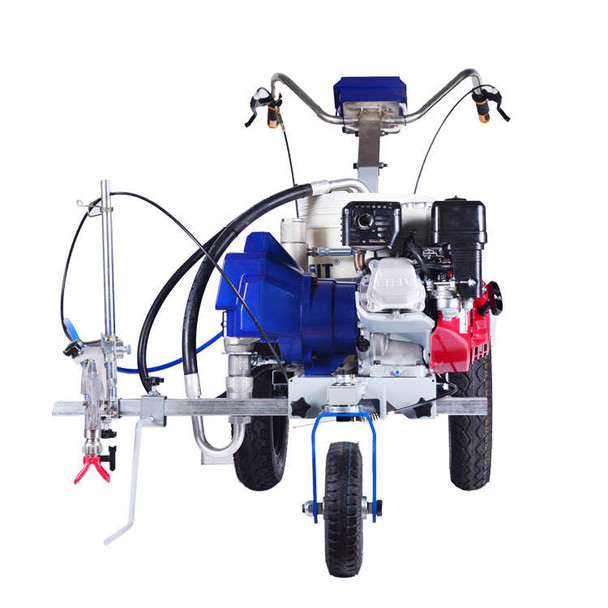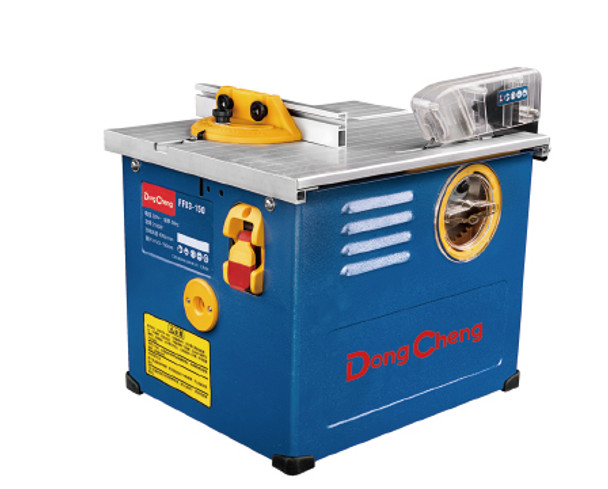10 Common Misconceptions About Industrial Equipment
Industrial equipment forms the backbone of countless industries, ranging from manufacturing and construction to agriculture and transportation. These tools, machinery, and devices play a pivotal role in enhancing efficiency, productivity, and safety across various sectors. Despite their significance, industrial equipment often faces misconceptions that can lead to misinformation and misunderstanding among users and stakeholders. Addressing these misconceptions is crucial to ensuring that businesses and professionals have accurate knowledge about the capabilities, functionalities, and benefits of industrial equipment. By debunking myths and clarifying misconceptions, industries can harness the full potential of their equipment, driving progress and innovation in the modern industrial landscape.
Buy Online... Cayken Diamond Core Drilling Machine SCY 26/3EBM
Industrial equipment encompasses a wide array of machinery, tools, and devices used in various sectors to facilitate production, manufacturing, construction, and other industrial processes. From flooring tools and machine to pneumatic air tools, and power tools. Industrial equipment spans a diverse range of applications. These tools are essential for boosting efficiency, streamlining operations, and ensuring the quality and safety of industrial processes. With advancements in technology, industrial equipment continues to evolve, becoming more sophisticated, automated, and interconnected. As a result, industries worldwide rely on modern industrial equipment to meet growing demands, drive innovation, and stay competitive in today's dynamic market landscape.
The 10 Common Misconceptions About Industrial Equipment
Misconception 1: Industrial Equipment is Expensive
Industrial equipment is often perceived as a costly investment, but it's crucial to consider the broader picture of cost-effectiveness and long-term benefits. While the initial upfront expense might seem significant, it's essential to evaluate the total cost of ownership. High-quality industrial equipment is designed for durability and reliability, reducing maintenance and replacement costs over time. Moreover, advancements in technology have led to more energy-efficient options, resulting in lower operational costs and, in turn, enhancing the overall cost-effectiveness of industrial equipment.
The notion that industrial equipment comes with prohibitively high upfront costs is a common misconception. In reality, various factors contribute to the initial expense, such as the equipment's complexity, features, and specifications. However, it's essential to consider the value and functionality that these investments bring to the industrial processes. Additionally, There are many cost-effective options available for different types of industrial equipment, such as leasing, renting, or buying used or refurbished equipment. These options can help reduce the initial investment and lower the risk of obsolescence. By investing in industrial equipment, businesses can also save money on labor, energy, and maintenance costs in the long run. Therefore, industrial equipment is not necessarily expensive, but rather a smart and strategic investment.
Misconception 2: Industrial Equipment is Complicated to Use
Another common misconception about industrial equipment is that it is too complicated to use and requires a lot of technical skills and knowledge. However, this is also not true. Many industrial equipment manufacturers design their products with user-friendliness and simplicity in mind. Graphical interfaces, touchscreen controls, and simplified menu structures contribute to a more user-friendly experience. The focus on ergonomics and accessibility ensures that even employees with minimal technical expertise can quickly adapt to and operate industrial equipment, debunking the myth that these tools are inherently complicated.
Furthermore, most manufacturers often offer comprehensive training programs and support resources. These initiatives aim to equip operators with the necessary skills to navigate and utilize industrial equipment effectively. Training sessions may include hands-on demonstrations, online modules, and documentation that simplify the learning process. Moreover, manufacturers often provide ongoing support through customer service hotlines, troubleshooting guides, and forums where operators can seek assistance. By showcasing these available resources, it becomes evident that the industry is committed to ensuring users have the knowledge and support needed to operate industrial equipment with confidence, dispelling the misconception that such equipment is overly complicated.
Buy Online... Airless Sprayer HVBAN EP310
Misconception 3: Industrial Equipment is Only for Large Companies
The belief that industrial equipment is exclusively reserved for large corporations is a misconception rooted in outdated perceptions. In reality, industrial equipment is designed with scalability and adaptability in mind, catering to businesses of all sizes. Many manufacturers recognize the diverse needs of the market and offer equipment with modular designs that can be scaled up or down based on the specific requirements of a business. This scalability ensures that even small and medium-sized enterprises (SMEs) can benefit from industrial tools without overextending their resources. The adaptability of these systems allows for customization, enabling businesses to choose equipment that aligns with their current operations while leaving room for expansion in the future. By understanding the diverse needs of businesses, it becomes clear that industrial equipment is not exclusive to large enterprises, challenging the misconception that only big companies can harness its benefits.
Misconception 4: Industrial Equipment is High Maintenance
A common misconception about industrial equipment is that it requires a lot of maintenance work and resources, such as time, money, and personnel. However, this is not true. With the advancement of maintenance technology and predictive maintenance, industrial equipment can be maintained more efficiently and effectively. Predictive maintenance is a type of maintenance that uses data analysis, artificial intelligence, and machine learning to monitor the condition and performance of industrial equipment and predict potential failures or degradations before they occur. This allows for timely and targeted maintenance actions that can prevent breakdowns, reduce downtime, extend equipment life, and optimize maintenance costs. Predictive maintenance can also improve the safety and quality of the work environment by reducing the risk of accidents and defects.
Some of the misconceptions about maintenance costs and time requirements are:
- Maintenance is a necessary evil that only spends money and does not add value. This is false because maintenance can add value by improving the reliability, efficiency, and productivity of industrial equipment, which can lead to increased customer satisfaction and profitability.
- Maintenance costs can be reduced quickly by cutting the maintenance budget and deferring maintenance work. This is false because deferred maintenance can lead to more severe and costly failures, lower equipment performance, and shorter equipment life. Maintenance costs can be reduced in the long term by improving the maintenance strategy and implementing predictive maintenance.
- Maintenance work is complicated and requires a lot of technical skills and knowledge. This is false because modern maintenance tools and technologies can make maintenance work easier and more accessible for different users. For example, some industrial equipment have user-friendly interfaces, clear instructions, and easy-to-follow guides that can help users operate and maintain them with ease and confidence. There are also many training programs and support resources available for users who want to learn more about industrial equipment and how to use it effectively.
Buy Online... Maxmech Air Compressor Da 1800-50
Misconception 5: Industrial Equipment is Unsafe
A common misconception about industrial equipment is that it poses a high risk of injury or death to workers who operate or work near them. However, this is not true. Modern industrial equipment is designed with safety features and regulatory compliance standards that aim to protect workers from potential hazards. Some of the safety features and standards for industrial equipment are:
- Personal protective equipment (PPE), such as gloves, goggles, hard hats, and earplugs, that workers wear to shield themselves from harm.
- Machine guards, such as physical barriers, sensors, or interlocks, that prevent workers from accessing moving parts or dangerous areas of the equipment.
- Automation, such as robots, computers, or software, that perform tasks that would otherwise be done by human workers, reducing their exposure to hazards.
- Safety training, such as courses, videos, or manuals, that educate workers on how to use the equipment safely and avoid risks.
- National Policy on Occupational Safety and Health, which is the government’s approach for achieving a safe and healthy working environment in Nigeria.
- Trade Standards, which describe the national standards, accreditation bodies, and conformity assessment bodies for industrial equipment in Nigeria.
The use of these safety features and standards has resulted in significant improvements in the safety of industrial equipment over the years. According to statistics, the number of fatal occupational injuries in Nigeria decreased by 23% from 2,652 in 2014 to 2,043 in 2018. The number of non-fatal occupational injuries in Nigeria also declined by 25% from 2,314,000 in 2014 to 1,729,000 in 2018. The rate of fatal occupational injuries per 100,000 workers in Africa decreased by 14% from 17.3 in 2014 to 14.9 in 2018. The rate of non-fatal occupational injuries per 100,000 workers in Africa also decreased by 9% from 1,242 in 2014 to 1,131 in 2018.
Therefore, industrial equipment is not unsafe, but rather equipped and regulated to ensure the safety of workers and the work environment.
Misconception 6: Industrial Equipment is Environmentally Harmful.
Contrary to the misconception that industrial equipment causes a lot of environmental damage, such as greenhouse gas emissions, air pollution, water pollution, and waste generation. However, this is not true. Many industrial equipment manufacturers and users adopt eco-friendly practices and sustainable manufacturing processes that aim to minimize their environmental impact.
Some of the eco-friendly practices and sustainable manufacturing processes are:
- Renewable energy sources, such as solar, wind, hydro, or biomass, that power the equipment with low or zero carbon emissions.
- Energy efficiency measures, such as insulation, lighting, motors, or controls, that reduce the energy consumption and demand of the equipment.
- Material efficiency strategies, such as reuse, recycling, or remanufacturing, that reduce the material input and output of the equipment.
- Green product design, such as life cycle assessment, design for environment, or eco-design, that consider the environmental impact of the product from cradle to grave.
- Pollution prevention techniques, such as filtration, treatment, or recovery, that reduce or eliminate the emission or discharge of pollutants from the equipment.
There are many examples of industrial equipment that have low emissions and high energy efficiency, such as:
- Electric vehicles, such as cars, buses, or trucks, that use batteries or fuel cells to run on electricity instead of fossil fuels, reducing tailpipe emissions and noise pollution.
- Heat pumps, such as air source, ground source, or water source, that use electricity to transfer heat from a low-temperature source to a high-temperature sink, providing heating or cooling with high efficiency and low emissions.
- LED lighting, such as bulbs, lamps, or fixtures, that use light emitting diodes to produce light with low power consumption and long lifespan, saving energy and reducing waste.
- Wind turbines, such as horizontal axis, vertical axis, or offshore, that use blades to capture the kinetic energy of the wind and convert it into electricity, generating clean and renewable power.
- Solar panels, such as photovoltaic, thermal, or hybrid, that use cells to absorb the sunlight and convert it into electricity or heat, generating clean and renewable energy.
Buy Online... Road Marking Machine HVBAN HB3400
Misconception 7: Industrial Equipment is Outdated
Dispelling the idea that industrial equipment is outdated requires showcasing the continuous innovations in technology and design within the industrial sector. Modern industrial equipment is characterized by rapid advancements, incorporating cutting-edge technologies to enhance efficiency, accuracy, and overall performance. Highlighting features such as
- Industrial Internet of Things (IIoT), which is the network of smart sensors, software, and data analytics that connect machines, devices, and people, enabling businesses to monitor and control industrial processes remotely and in real time.
- Additive manufacturing (AM), which is the process of creating objects by depositing layers of material, such as metal, plastic, or ceramic, using a computer-controlled device, such as a 3D printer, a laser, or an electron beam.
- Artificial intelligence (AI), referring to simulation of human intelligence by machines, such as computers, robots, or software, that can perform tasks that require learning, reasoning, and decision making.
- Immersive technology, which is the use of devices, such as virtual reality (VR) headsets, augmented reality (AR) glasses, or haptic gloves, that create or enhance a simulated environment that immerses the user in a realistic or imaginary experience.
- Sustainable manufacturing, which is the practice of producing goods and services in a way that minimizes the environmental impact, such as greenhouse gas emissions, air pollution, water pollution, and waste generation, and maximizes the social and economic benefits, such as resource efficiency, worker safety, and customer satisfaction.
These innovations have enabled industrial equipment to become more flexible, efficient, precise, and eco-friendly, meeting the changing needs and demands of the market and society.
Misconception 8: Industrial Equipment is Only for Specific Industries
Another common misconception about industrial equipment is that it is only suitable for specific industries that have specialized needs and demands. This is not true. Industrial equipment is versatile and adaptable, meaning that it can be used across various sectors and applications. Industrial equipment can help different industries solve diverse challenges, such as increasing productivity, improving quality, reducing costs, enhancing safety, and minimizing environmental impact. Industrial equipment can also enable different industries to innovate and create new opportunities, such as developing new products, services, or markets.
There are many examples of cross-industry applications and benefits of industrial equipment, such as:
- Smart cities, which use industrial equipment such as sensors, cameras, lighting, traffic signals, waste management systems, and water supply systems, to collect and analyze data, optimize urban services, and improve the quality of life for citizens.
- Transportation, which uses industrial equipment such as electric vehicles, trains, planes, ships, and drones, to transport people and goods more efficiently, safely, and sustainably.
- Construction, which uses industrial equipment such as cranes, excavators, bulldozers, loaders, and concrete mixers, to build and maintain infrastructure, such as roads, bridges, buildings, and dams.
- Energy, which uses industrial equipment such as wind turbines, solar panels, hydroelectric plants, and smart grids, to generate and distribute clean and renewable energy.
- Water, which uses industrial equipment such as pumps, valves, pipes, filters, and meters, to manage and treat water resources, such as drinking water, wastewater, and irrigation water.
Buy Online... Ingco AAC2508 Auto Air Compressor
Misconception 9: Industrial Equipment is Inflexible
The misconception that industrial equipment is inflexible is contradicted by the wide array of customization options and modular designs available in the market. Industrial equipment can offer customization options and modular designs that allow users to tailor the equipment to their preferences and requirements. Some of the customization options and modular designs are :
- Customization options, such as colors, sizes, shapes, or features, that enable users to personalize the appearance and functionality of the equipment.
- Modular designs, such as components, modules, or systems, that enable users to assemble, disassemble, or reconfigure the equipment according to their needs.
- Plug-and-play devices, such as sensors, cameras, or controllers, that enable users to connect, disconnect, or replace the devices without affecting the operation of the equipment.
- Software updates, such as patches, upgrades, or downloads, that enable users to improve the performance, security, or compatibility of the equipment.
Misconception 10: Industrial Equipment is Replaceable with Manual Labor
Dispelling the misconception that industrial equipment is easily replaceable with manual labor involves emphasizing the significant efficiency and productivity gains associated with machinery. Industrial equipment offers significant efficiency and productivity gains that manual labor cannot match. Industrial equipment can perform tasks faster, more accurately, and more consistently than human workers, leading to increased output and quality. Industrial equipment can also perform tasks that are too complex, dangerous, or tedious for human workers, expanding the scope and potential of production.
There are many case studies and cost-benefit analyses that compare manual labor and equipment use, showing the advantages of industrial equipment over manual labor. Some of them are:
- A Nigerian food manufacturer that used an automated packaging machine to seal and label its products, reducing the number of workers from 12 to 4, increasing the production capacity from 120 to 240 packs per hour.
- A South African warehouse operator that adopted a robotic palletizing system to stack and transport goods, increasing the palletizing speed by 40%, reducing the labor costs by 50%, and improving the safety and ergonomics of the workers.
- A Kenyan construction company that used a concrete mixer truck to mix and transport concrete, reducing the mixing time by 75%, the labor requirement by 80%, and the material wastage by 90%, and improving the quality and consistency of the concrete.
- A Ghanaian water utility that used smart meters to measure and bill water consumption, reducing the meter reading errors by 100%, the non-revenue water by 30%, and the operational costs by 40%, and increasing the customer satisfaction and revenue collection by 50%.
Buy Online... DongCheng-DUST FREE SAW-DFF03-150
Related Article;
Maintaining Your Industrial Equipment: Tips and Best Practices
Conclusion
Industrial equipment is a vital and valuable asset for many businesses and professionals across various sectors and applications. However, there are many misconceptions and myths about industrial equipment that can hinder its adoption and utilization. In this article, we have debunked 10 common misconceptions about industrial equipment, and we have also provided factual information, evidence, and examples to support our arguments and show the benefits and advantages of industrial equipment over these misconceptions. We hope that this article has helped you gain a better and more accurate understanding of industrial equipment and its potential for your business or profession. For More information or if you have any questions or Enquiries feel free to Contact Us @ gz-supplies.com
Recent Posts
-
How to Choose the Right Industrial Cleaning Service Provider
Key takeawayThoroughly Assess Your Needs and Providers: Understand your specific industrial cle …Jul 26, 2024 -
Floor Paint Maintenance: How to Keep Your Floors Looking Their Best
Maintaining your painted floors is essential for preserving their beauty and extending their lifespa …Jul 25, 2024 -
The Best Floor Paint for Different Types of Flooring
When it comes to revitalizing your home's flooring, choosing the right paint can make all the d …Jul 19, 2024








